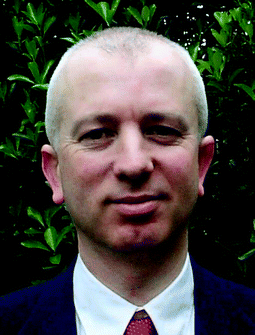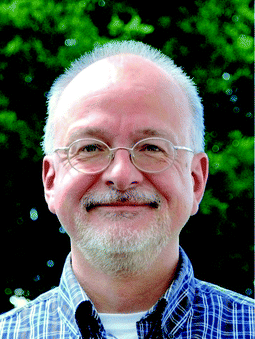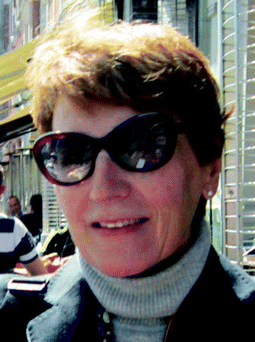Editorial: Supramolecular chemistry in water†
Anthony P.
Davis
a,
Stefan
Kubik
b and
Antonella
Dalla Cort
c
aSchool of Chemistry, University of Bristol, Cantock's Close, Bristol BS8 1TS, UK. E-mail: Anthony.Davis@bristol.ac.uk
bFachbereich Chemie – Organische Chemie, Technische Universität Kaiserslautern, Erwin-Schrödinger-Straße, 67663 Kaiserslautern, Germany. E-mail: kubik@chemie.uni-kl.de
cDipartimento di Chimica and IMC-CNR, Università La Sapienza, Piazzale Aldo Moro 5, 00185 Roma, Italy. E-mail: antonella.dallacort@uniroma1.it
Supramolecular chemistry has been defined in various ways, but perhaps the most inclusive is “The design and synthesis of functional molecules.” As the subject develops, there is pressure to make systems, which are not only functional but genuinely useful, and this means that they must operate in “real-life” environments. Of all such environments, the most important is arguably water – the most abundant solvent on earth, and the medium for all biology. However, water is not the easiest environment in which to practise supramolecular chemistry. Polar interactions are weak due to competition from solvent, so hydrogen bonding and donor–acceptor interactions (two of our favourite tools) are relatively ineffective. Hydrophobic interactions are available instead, but these are less easy to control. Moreover water-soluble molecules can be difficult to handle using the standard methodology of organic synthesis.
Despite the difficulties, there is growing recognition that the problems of conducting supramolecular chemistry in water must be addressed.1–4 Only then can we help to influence biology, contribute to medicine, or solve environmental issues such as the detection of water-borne pollutants. This web collection of over 50 papers reflects the widespread interest in this field.
The collection is founded in the European COST-funded Network CM1005 “Supramolecular Chemistry in Water”, which was set up to coordinate work in the area and of which the editors and many contributors are members. The major aim of this network, comprising overall 22 countries and 79 individual members, was to bring the research groups within Europe together and encourage collaborations, for example by sponsoring exchanges of early-stage researchers. The research focused on three main areas of interest. A large fraction of the participating groups addressed molecular recognition, the specific and selective non-covalent interaction between low molecular weight compounds in water. While water certainly does not prevent molecular recognition between appropriate receptors and substrates from occurring, it is nevertheless a challenge to achieve the affinity and selectivity found in Nature. Recent discoveries have shown, however, that some low molecular weight receptors can compete with natural counterparts, and the lessons learned from this work are expected to facilitate further improvements. In this context, learning to harness the special properties of water molecules when included in hydrophobic cavities or when surrounding hydrophobic surfaces represents a particularly promising concept,5 as demonstrated by several contributions to this web-based special issue.
Another central topic of the COST network was the study of water-based self-assembled systems. This included the design of molecules to operate in lipid bilayers, as well as the use of self-assembly to produce new water-based materials, or systems featuring nano-scaled compartments with different properties from the surrounding solvent. Finally, catalysis in water was also pursued, but with a clear focus on supramolecular systems that combine recognition and catalysis thus allowing the selective transformation of certain substrates.
All three of these aspects are substantially represented in the various original contributions to this web-based collection. These publications only showcase a fraction of the diverse and multidisciplinary field of supramolecular chemistry in water, but they clearly demonstrate how this field reaches out into other areas, for example biology, medicine, or materials sciences, and certainly into applications. Moreover, they highlight the notion that the properties of a molecule, whether a receptor, a building block for self-assembly, or a catalyst, can best be understood by considering the whole complex system in which it resides, including the solvent molecules. They also show that the special properties of water with its high polarity, strong hydrogen-bonding ability, and characteristic feature of the hydrophobic effect, present not only challenges for supramolecular chemists but also opportunities. Finally they illustrate the breadth of interest in the topic among supramolecular chemists from many countries. The collection is by no means confined to members of the COST Network, and we have been pleased to welcome papers from many external groups (including several from outside Europe).
We warmly thank COST for funding Action CM1005, and allowing us to participate in such a rewarding experience. We are confident that the Network has served its purpose in stimulating progress in this important area. In addition, we thank all contributors to this collection for making it such a success.
References
- G. V. Oshovsky, D. N. Reinhoudt and W. Verboom, Angew. Chem., Int. Ed., 2007, 46, 2366–2393 CrossRef CAS PubMed
.
- S. M. Biros and J. Rebek Jr., Chem. Soc. Rev., 2007, 36, 93–104 RSC
.
- M. T. Albelda, J. C. Frias, E. García-España and H.-J. Schneider, Chem. Soc. Rev., 2012, 41, 3859–3877 RSC
.
- E. A. Kataev and C. Müller, Tetrahedron, 2014, 70, 137–167 CrossRef CAS PubMed
.
- F. Biedermann, W. M. Nau and H.-J. Schneider, Angew. Chem., Int. Ed., 2014, 53, 11158–11171 CrossRef CAS PubMed
.
Footnote |
| † See all articles in the collection: rsc.li/ob-h2o-supramol-chem |
| This journal is © The Royal Society of Chemistry 2015 |



